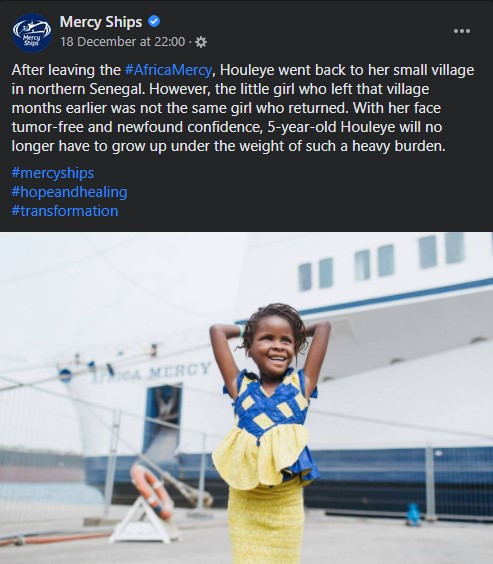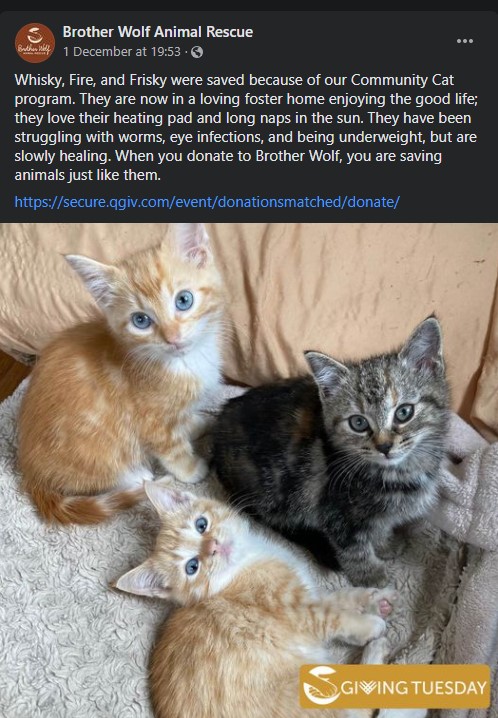The folks over at Millennial Impact Report just released “10 Years Looking Back,” a summary of a decade’s worth of research into how Millennial donors view philanthropy and engage with nonprofits. If you haven’t read it, download the report here! It’s a fantastic (and very thorough!) look at how Millennials behave and how you can engage with them.
When we read over the report, we couldn’t stop thinking about all the information about Millennial donor preferences we uncovered in our Generational Giving Report. Did our findings match up? What do those findings mean for you? Check out what we learned!
Key Takeaway: Millennials want to know their gifts will make a difference
This was a key takeaway from both the 2010 and 2011 Millennial Impact Reports, so it’s a pretty big deal. This is also a notable finding from our 2019 Generational Giving Report! They’re most motivated to donate when they hear stories from people who would benefit from their gift, and they’re most likely to look for information about how their gift will make an impact when they’re researching nonprofits before donating.
Millennials also want information about how their gift made a difference after they give, too. The largest portion of Millennials want updates containing stories about the people their donation helped, and they’re most likely to stop donating to a nonprofit if they felt their donation didn’t make a difference.
What to do with this information
Show your Millennial donors that they make a difference! One of the most effective ways to do this is to collect stories about the people you’ve helped, then build those into your appeals, social posts, and follow-ups.

Key Takeaway: Millennials are largely influenced by their peers
10 years of study shows that Millennials are far more influenced by their peers than they are by marketing, organizational reputation, or other factors. They look to their peers for opinions about nonprofits and are more likely to volunteer somewhere if their friends volunteer there.
The Millennial respondents to our Generational Giving survey reiterated this finding! 20% of our respondents said that hearing about nonprofits from friends and family is the biggest inspiration to give to charity. About the same percentage of people indicated that asking their friends and family about their impressions of a nonprofit is their #1 way of vetting a nonprofit before making a gift.
This is a great social proof tool! This video shows influential young people volunteering with an Orlando food bank—showcasing young volunteers is a great move, and this one has the added boost of showcasing people who already have an online following.
What to do with this information
Millennials are more compelled by their friends and family’s testimonials than flashy marketing campaigns. That doesn’t mean you shouldn’t put effort into marketing, but it does mean you should emphasize relationship-building as well. Give donors an outstanding donor journey, make them feel amazing about their involvement, and give them something to talk about!
Focus on including elements of social proof in your marketing, too. Show your Millennial donors that their peers are rallying around your cause! Include testimonials and stories from other young donors, offer volunteer opportunities for groups of friends, and encourage your donors to tell their friends and family about their involvement with your cause. Try setting up a peer-to-peer event as a way to let Millennials raise money together as part of a team while sharing their experiences with their networks!
Key Takeaway: Millennials approach philanthropy a little differently
Millennials, as a generation, approach philanthropy differently than their parents and older siblings. Baby Boomers, for example, want to know that their money is used wisely. They like knowing that the organizations they support are well-respected.
Millennials, on the other hand, are more concerned with causes than they are with companies. They’re not as compelled by a nonprofit having a large, well-established brand as they are with the impact the nonprofit makes and the stories they share. Our Generational Giving Report, for example, found that Millennials are more likely to give if they see stories, impact statements, and updates from nonprofits. Baby Boomers, on the other hand, are more likely to see their gifts like investments—they want to give to respected nonprofits that will use their money well, and they’ll check financial reports and third-party evaluation sites to make sure they’re making a good choice.
The Millennial Impact Report also notes that Millennials view philanthropy as part of themselves. They talk with their friends and family before donating, they’re more likely to give and volunteer if their friends and co-workers do it, and they’re more likely to buy from companies that are socially responsible. This bore out in our Report, too; 23% of our Millennial respondents said that the #1 motivator for long-term support of nonprofits is that they view their philanthropic activity as a key part of their legacy.
What to do with this information
When you’re planning your campaign, remember that your Millennial donors see their support as an important part of themselves. Be intentional about making donors feel good about their support. It sounds corny, but make them feel like they’re good people because of what they’ve done. This should be done subtly, of course, or it comes off as weird and pandering. Try adding something like, “Look what you’ve helped achieve! Your generosity and support will make our community a better place.” This sentence tells them they’re generous and reiterates the difference they’re making with their support. It’s a great way to speak to Millennials’ motivations!

Conclusion
The Millennial Impact Report’s most recent publication, “10 Years Looking Back,” sums up a decade of research into Millennials’ views on philanthropy. Our Generational Giving Report focuses on a narrower slice of the generation’s donation and communications preferences. And, while we can’t summarize both reports in their entirety in this article, we are excited to see so many overlapping trends and patterns. The Millennial generation is a large cohort with increasing spending power, and their influence in the nonprofit sector is set to grow over the next few decades. Engage this group by showing them their impact, building relationships in your community, and giving them the opportunity to connect with your mission on a deep, personal level.
Looking for the Millennial Impact Report? Download the report here!
Want to read the full Generational Giving Report? Download it here!







